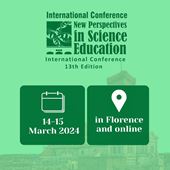Using Photos to Elicit Secondary Students’ Perspectives of Connecting Science with the Real World
Samar Albalawi, University of Manchester (United Kingdom)
Andrew Howes, University of Manchester (United Kingdom)
Abstract
Relevance, and the perception of relevance, is one of the most critical issues in science education today, especially as the field changes (Stuckey, Hofstein, Mamlok-Naaman, & Eilks, 2013). This is because many young people around the world view science education as irrelevant to or unconnected from their lives; this is particularly true of much of the science taught in secondary schools (Stuckey et al., 2013). According to Holbrook and Rannikmae (2009), Gilbert (2006) and Dillon (2016), this could be because many students feel that science itself is irrelevant to their own lives and the communities surrounding them. The obvious problem is that students are not interested in science, as they said clearly: science is important but not for me (Jenkins & Nelson, 2005). This study aimed to explore how young people understand the relevance of science and science education in their lives. The method used is the photo-elicitation interview (PEI). We utilise cultural models as a theory to examine the participants’ perspective. The participants were a group of 16 pupils (13-15 years old) who attended secondary school in England. They were from different backgrounds, attainment level and attitudes toward science. We provided them with sixteen disposable cameras, and asked the participants to take a series of photographs to demonstrate how they see science connected and disconnected to the real world. Then we held discussions with them, based on the photographs that they had taken. This approach made it possible to attend carefully to the meanings that science had for these young people, without the whole process being dominated by words.
This research has revealed how differently pupils think about science from each other and from what the educator might think and assume. It also allowed young people the opportunity to position themselves in relation to science both in and out of school, linking to their agency as they showed how, for them, science was connected and disconnected to everyday life. The study will suggest ways for teachers and curriculum developers to pay more attention to students’ backgrounds and perceptions, and to design scientific instructional approaches that better meet students’ needs for a meaningful engagement with science.
Keywords: science education, perspective, cultural model, photo elicitation;
References:
[1] Dillon, Justin. (2016). 17 On Scientific Literacy and Curriculum Reform. Towards a Convergence Between Science and Environmental Education: The Selected Works of Justin Dillon, 269.
[2] Gilbert, John K. (2006). On the nature of “context” in chemical education. International Journal of Science Education, 28(9), 957-976.
[3] Holbrook, Jack, & Rannikmae, Miia. (2009). The meaning of scientific literacy. International Journal of Environmental and Science Education, 4(3), 275-288.
[4] Jenkins, Edgar W, & Nelson, NW. (2005). Important but not for me: Students’ attitudes towards secondary school science in England. Research in Science & Technological Education, 23(1), 41-57.
[5] Stuckey, Marc, Hofstein, Avi, Mamlok-Naaman, Rachel, & Eilks, Ingo. (2013). The meaning of ‘relevance’in science education and its implications for the science curriculum. Studies in Science Education, 49(1), 1-34.
 New Perspectives in Science Education
New Perspectives in Science Education


























